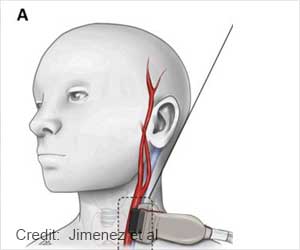Intensive blood pressure (BP) control may pose a serious risk for falls and fainting in elderly patients with high blood pressure (hypertension) as they experience unusually low blood pressures.

‘Elderly patients with high blood pressure (hypertension) taking prescribed medications may experience unusually low blood pressures which can pose a risk for severe falls and fainting.’





This research is timely because late last year the American Heart Association and the American College of Cardiology lowered its definition of high blood pressure from a systolic blood pressure of at least 140 to a systolic of at least 130, said the study's lead author John J. Sim, MD, a nephrologist with the Kaiser Permanente Los Angeles Medical Center."Efforts to reduce blood pressures for patients with hypertension are an important factor in reducing the risk of heart attack and stroke," said Dr. Sim.
"But our study shows that attaining a lower blood pressure could create to a subpopulation of patients whose blood pressures may go too low, which can pose a risk for serious falls and fainting."
To determine the effects of blood pressure reduction among hypertension on patients, Dr. Sim and a team of researchers studied the electronic health records of more than 475,000 Kaiser Permanente patients in Southern California who were prescribed medication to treat hypertension. Over a one-year period, both mean and minimum systolic blood pressure readings of less than 110 mmHg were associated with higher rates of serious falls and fainting that resulted in emergency department visits or inpatient encounters.
Among the patients with treated blood pressure:
Advertisement
- 27 percent had a systolic blood pressure under 110mmHg during at least one visit
- 3 percent of patients had an average systolic pressure reading of less than 110mmHg over the one-year study period
- Patients with a single episode of systolic pressure lower than or equal to 110mmHg during the one-year period were twice as likely to experience a serious fall or faint
- Patients who had an average systolic blood pressure lower than 110mmHg over the one-year study period had a 50 percent greater risk of serious falls and fainting than those who had an average systolic blood pressure higher than 110mmHg
"Physicians considering lower blood pressure targets for their patients should weigh the risks and benefits of aggressive blood pressure lowering on an individual basis, especially in older patients," said Dr. Sim.
He noted that older patients are more likely to have acute reductions in blood pressure, such as orthostatic hypotension, which is when a patient's blood pressure drops substantially when they stand or get upright, and have slower reflexes to compensate and normalize their blood pressure. They also are more susceptible to side effects of low blood pressure, he said.
Advertisement
Source-Eurekalert















